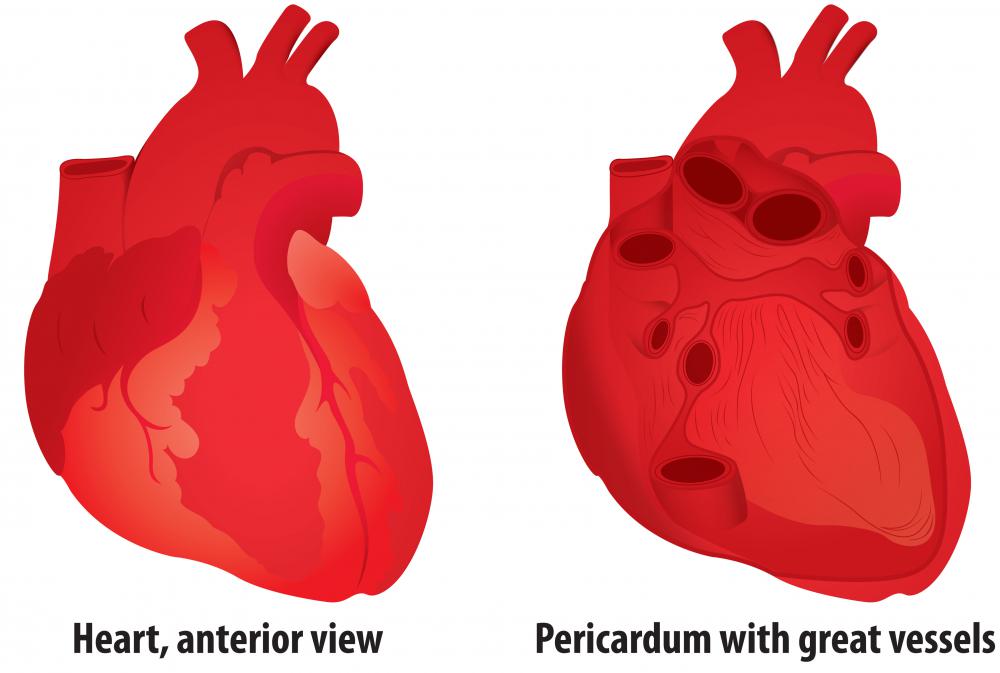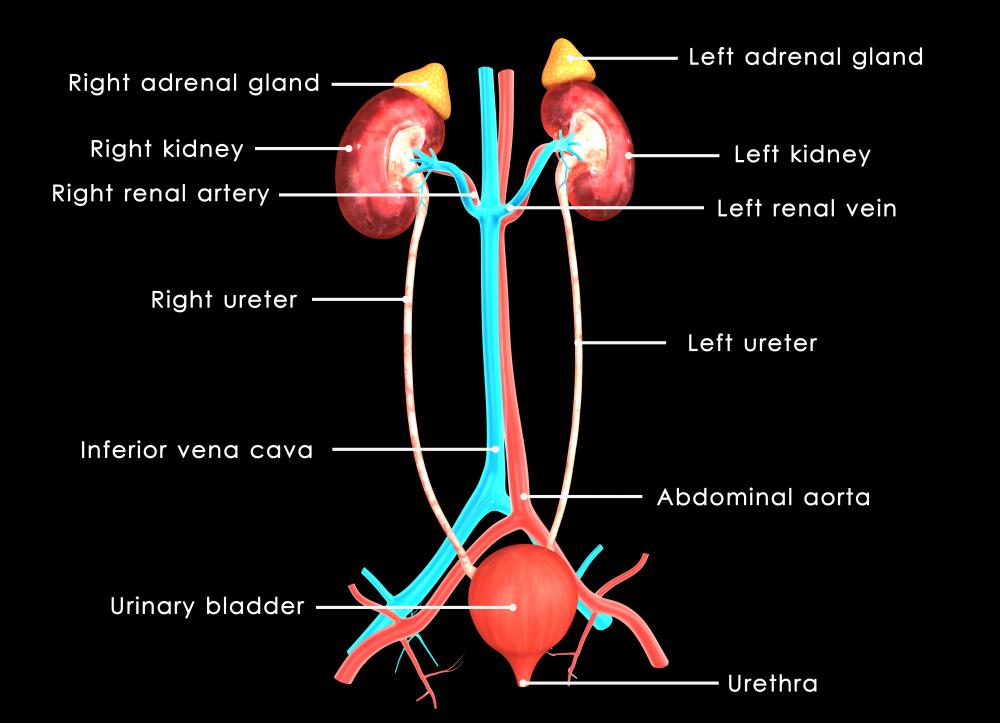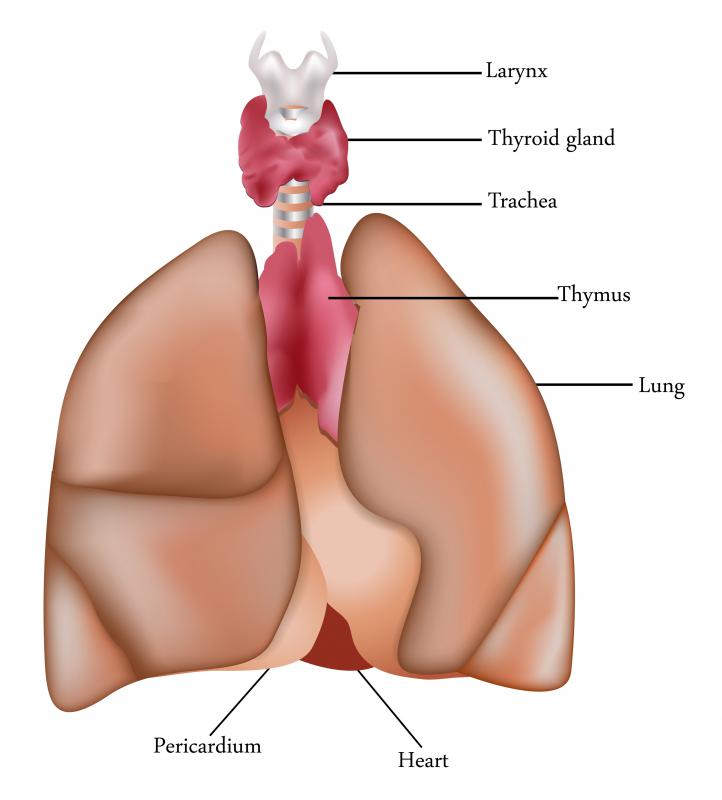At WiseGEEK, we're committed to delivering accurate, trustworthy information. Our expert-authored content is rigorously fact-checked and sourced from credible authorities. Discover how we uphold the highest standards in providing you with reliable knowledge.
What Is the Parietal Pericardium?
Every muscle inside the body has a thin covering over it to keep similar muscle fibers grouped together and to protect them from harm. The heart has two separate defensive shields, the epicardium and the pericardium. The pericardium, a sac-like casing has two separate layers and is responsible for shielding the heart muscle while providing the lubrication necessary for heart to work properly. The parietal pericardium is the innermost layer of this protective pouch.
The outer layer of the pericardium is fibrous, containing a mixture of loose and dense connective tissue that acts like "glue” to anchor the heart in place. This layer also offers filmy coating to defend the heart against foreign invaders. The fibrous pericardium also inhibits the heart from overflowing with blood. This sheet lies in direct contact with the second, or serous, layer. The serous layer is where the parietal pericardium is located.

The serous level of the pericardial sac is, in reality, two different sheets, the visceral and the parietal pericardium. The visceral pericardium is the outermost stratum which is actually united with the epicardium, the filmy covering over the pericardium. The parietal pericardium is essentially fused to the outside fibrous tissues or layer in specific areas.

This merging occurs where the aorta, the largest artery in the body, along with the pulmonary trunk leaves the heart to deliver oxygenated blood to the body. Layer bonding also occurs where the superior and inferior vena cava, the veins that return deoxygenated blood back into the heart enter the heart muscle. However, there is a minute space between the visceral and parietal pericardium, called the potential space. The potential space is a small crevice filled with a substance called pericardial fluid. This fluid helps lubricate the different protective layers so the heart can function properly.

When problems arise within the parietal pericardium, such as inflammation or swelling referred to as pericarditis, it can cause symptoms such as chest pains or pressure, fatigue and anxiety issues. In severe cases where there is a buildup of fluids inside the pericardium, called pericardial effusion, a condition called cardiac tamponade can occur. This can disrupt the normal rhythm of the heart and without proper treatment, including the removal of excess fluid, the heart will not be able to pump blood effectively. Another side effect of this condition could be the collapse of the vascular network, the blood vessels responsible for the transport of blood.
AS FEATURED ON:
AS FEATURED ON:
















Discuss this Article
Post your comments